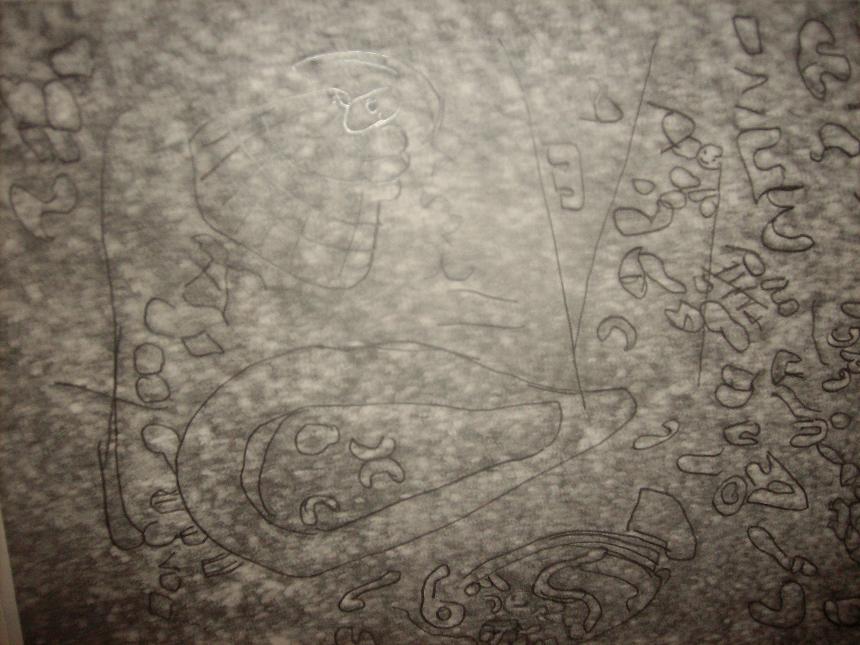The premise of the Brighton site is that it is much older than and much more sophisticated than any other paleo site found in Ontario. The Pukaskwa people were setteled around Lake Superior by 9.000 BC. There are some faily well intact ruins found in Pukaskwa National Park by visitors as witnessed by there photographs. When I visited there I saw one small pit and it was obviously very ancient. The whole area has a very long history and there are many ancient mines in the mountains there. Devil's Warehouse Island was a red ochre mine for thousands of years. There was enough copper taken from the area to fuel the entire Bronze Age of Europe. The article on the nuclear catastrophy in 12,500 BC states that it caused the atomic clocks to reset. Here is good evidence that there people living on Manatoulin Island on Lake Huron 30,000 years ago.
Canada's Sheguiandah Site: pre-Clovis | |||||||
or Paleo-Indian? | |||||||
Where and what is the Sheguiandah Site? | |||||||
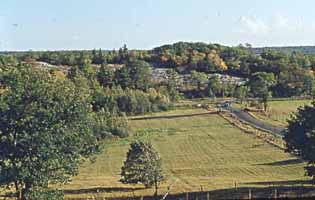 | The Sheguiandah archaeological site is on a rocky hill where traces of prehistoric peoples have been preserved in forest soils, in peat beds, and even under the open sky. There are stone tools in abundance, quarried bedrock from which the stone was obtained - and 50 years' worth of contention over whether people lived there before the Ice Age. The hill is close to the modern village of Sheguiandah, on Manitoulin Island in Lake Huron. Protected by Ontario's heritage laws, it has been illegal to remove any artifact from the site for more than half a century. | ||||||
What is the history of research there? | |||||||
| The site was discovered by National Museum of Canada archaeologist Thomas E. Lee in 1951, and he excavated intensively there with large crews for the next four years (1952 to 1955). They made exciting finds that put Sheguiandah on the map for having the oldest traces of man in Ontario (Paleo-Indian spearpoints, about 10,000 years old). Even these soon paled in significance, however, when geologists told Lee that artifacts under the spearpoints were in Ice Age deposits. This exploded the established idea that spear-throwing Clovis Indians were the first humans to enter the Americas, after the Ice Age. Lee was vigorous in making his case, but the established authorities did not want to hear it. More than four decades would pass before the American "Clovis barrier" could be broken. | 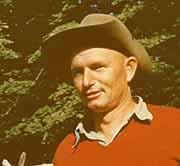 | ||||||
| Meanwhile, opposition brought Lee's work to a premature end, and he found his papers rejected by leading journals for being "too controversial." He never got another chance to work on the site, and for a long, long time, no one else did, either. In 1987 neutral observers characterized it as "Canada's most neglected major site of the past 30 years." | |||||||
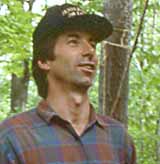 | 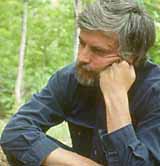 | No one was granted permission to work at the site until nearly a decade after Lee had died in 1982. His old trenches were reopened in 1991 (and closed again that same year) by a group jointly led by Patrick J. Julig of Laurentian University, in Sudbury (left), and Peter L. Storck of the Royal Ontario Museum in Toronto (right). They re-evaluated some of Lee's original evidence and then made their own observations, which led them to feel they could refute his challenge to established thought. In their view, the site is only10,500 years old, just a little younger than Clovis. | |||||
| Instead of stimulating further work, the reinvestigation seems to have once again terminated all interest in the site. | |||||||
What kinds of evidence are there? | |||||||
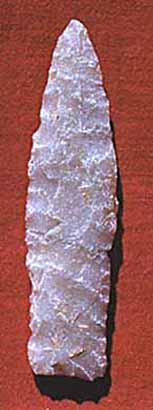 | This being an archaeological site, the first lines of evidence have to do with the things left behind by the prehistoric peoples who lived and worked there. Ordinarily, an archaeologist can look at an assemblage of ancient specimens and draw conclusions about who made them and why, based on knowledge acquired elsewhere. At Sheguiandah, this is so for only a few dozen spear points (including the one shown here, at actual size). All concerned -- Lee, Storck, and Julig -- agree that these are mainly late Paleo-Indian and early Archaic forms, dating from about 10,000 years ago. But there is no agreement on who made the masses of other stone tools and debris that cover the Paleo-Indian spear points, or the quite different artifacts buried underneath them. Lee likened the latter to Old-World paleolithic cultures of 30,000 or more years ago. | ||||||
| The geological context of the artifacts provides a second complex of evidence. Geological events such as the Ice Age, high water levels in the Great Lakes, and the weathering of rock over immense spans of time leave traces that can be fitted into broader chronologies. If the artifacts are associated with those events, then something is known about their ages, too. | |||||||
| To understand the geological deposits where they were digging, both Lee and Julig worked with specialists. The geologists Thomas Lee worked with told him that the older tools he was finding were in sediments directly deposited by continental glaciers. That would mean that the Paleo-Indians were latecomers, because people had lived on this hilltop site before the last major advance of the Ice Age. | |||||||
| Geological opinions presented to Storck and Julig instead portray these same deposits as beach-related, stemming from a high-water lake stand that occurred at the end of the Ice Age, about 10,500 years ago. | |||||||
| The interpretation of almost every line of evidence is radically different, depending on whether the successive sediment layers are seen as intact or disturbed. For Lee, the stratification of the soil is real and represents a meaningful timeline. Storck and Julig dispute this, and contend that artifacts were introduced into the different layers by soil mixing. | |||||||
So what is the conclusion? | |||||||
| No single conclusion accomodates all the evidence from both sides. The authors of the reinvestigation differ widely from Lee not only on the age of the site, the identity of the peoples involved, and the nature of the sediments, but on the reasons prehistoric peoples occupied the site at all, and the defining purpose of most of the stone tools they left behind. None of the issues are settled. | |||||||
| To put Lee's view in brief, early peoples lived and left their stone tools on the Sheguiandah hilltop in a warm period before the last major glacial advance. The returning glaciers caught up and moved those tools - but only a few yards or tens of yards. The tools stayed locked up under the ice for tens of thousands of years, until it melted away. Then a succession of Paleo-Indian and Archaic groups migrated along the north shore of a subarctic Great Lake. Each stopped briefly at Sheguiandah, leaving a scattering of spearpoints and other stone tools (maybe 5% of the total archaeologists now find) on top of the glacial till deposits. About 5000 years ago, the lake basin filled again, temporarily turning the hill into an island in Great Lakes Nipissing. A tremendous stone-quarrying industry sprang up, covering parts of the site at least five feet (1.35 m) deep in broken rock. Yet it wasn't the rock they wanted, except as on-the-spot tools to be used in the splitting and shaping of wood for trade. | |||||||
| Storck and Julig, by contrast, envision Paleo-Indians as the first humans and principal inhabitants of the site, arriving about 10,000 years ago, after the Ice age was over. Natural mixing introduced these and Archaic peoples' artifacts into beach sediments, which Lee has mistaken for glacial deposits. Great Lakes Nipissing does not figure significantly in their chronology of cultures, and the majority of the larger artifacts are seen, not as wood-working tools, but as unfinished stages in the production of small stone tools, to be carried away far and wide. | |||||||
| Neither point of view takes cognizance of certain contrary evidence. Lee's interpretation, for instance, appears inconsistent with later findings that the appearance of the sediments could be due to post-depositional mixing, which only made a beach look like glacial till. | |||||||
| Likewise, Storck and Julig's interpretation of Lee's tills as beach deposits seems at odds with Lee's observation of rounded sandy inclusions. Lumps of sand would have crumbled if washed about on a beach, but would survive in a frozen state under a glacier. And the controversial deposits have an internal structure, or fabric. Glacial deposits have them (and so, after a fashion, can beaches) but these fabrics would have been destroyed if wholesale soil mixing had taken place. | |||||||
| Why they said it was glacial till | Why beach deposits | ||||||
Where can I find out more? | |||||||
| Dozens of archaeological papers by the people who actually worked on the site can be found in university, musuem, and public libraries. Those mentioned here (except the Field-Naturalist) are still available from the publishers. | |||||||
Thomas Lee's primary report, The Antiquity of the Sheguiandah Site, was originally published in 1957 in The Canadian Field-Naturalist (Vol. 71, No. 3, pages 117-137), together with a companion paper by the geologist John Sanford (pages 138-148). Both were reprinted in 1983, in The Anthropological Journal of Canada (Vol. 21, pages 46-73 and 74-87). CN ISSN 0003-5475 | |||||||
Patrick Julig and Peter Storck's main reports appeared as Chapters 4 and 5 in a book edited by Julig, The Sheguiandah Site: Archaeological, geological and paleobotanical studies at a Paleoindian site on Manitoulin Island, Ontario, published by the Canadian Museum of Civilization in 2002. Chapter 2 in that same book is a history of Thomas Lee's years on the site, written by his son, Robert. ISBN 0-660-18755-8 | |||||||
| Peter Storck has also written an autobiographical account of his career, Journey to the Ice Age: Discovering an Ancient World, published by UBC Press in 2004. Chapter 5 recounts his long interest in and eventual arrival on the Sheguiandah Site. ISBN 0-7748-1028-9 | |||||||
Created in December, 2005 by R. E. Lee. Photos by T.E. Lee and R.E. Lee, or their friends; all from Sheguiandah except the Kaskawulsh Glacier, with its cliff-like edge above a glacial lake (Kluane National Park) and the arctic beach (Ungava). Modified in March, 2006. Comments and questions can be directed to Robert E. Lee using his initials (rel) at magma.ca.
